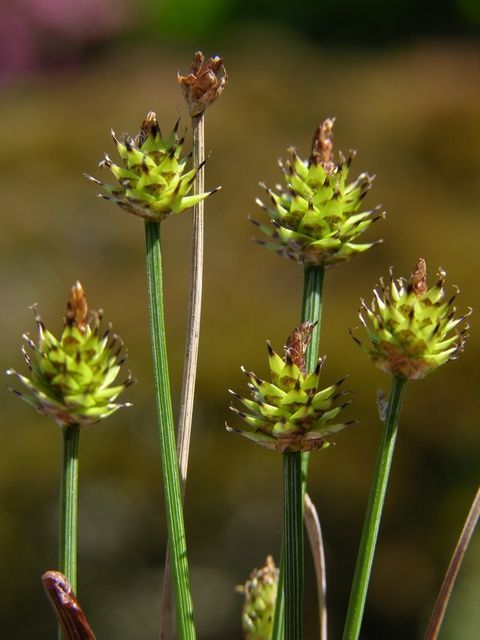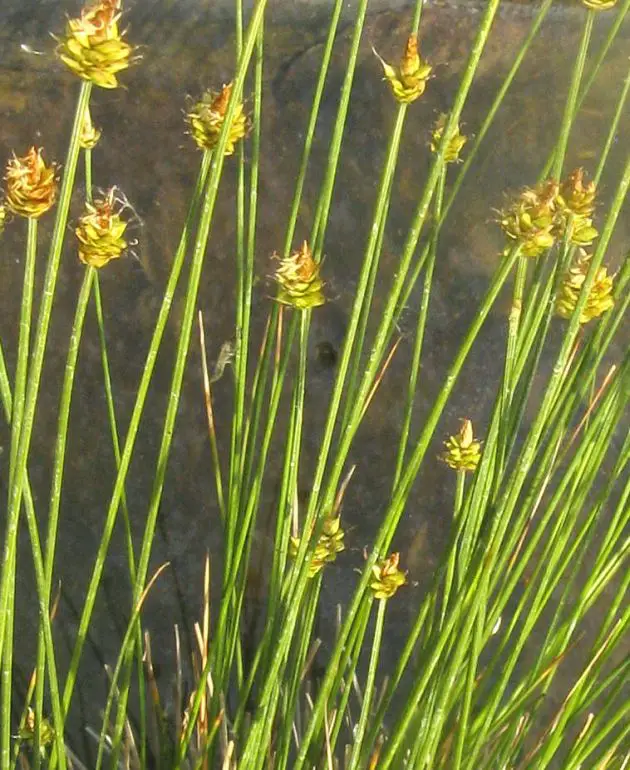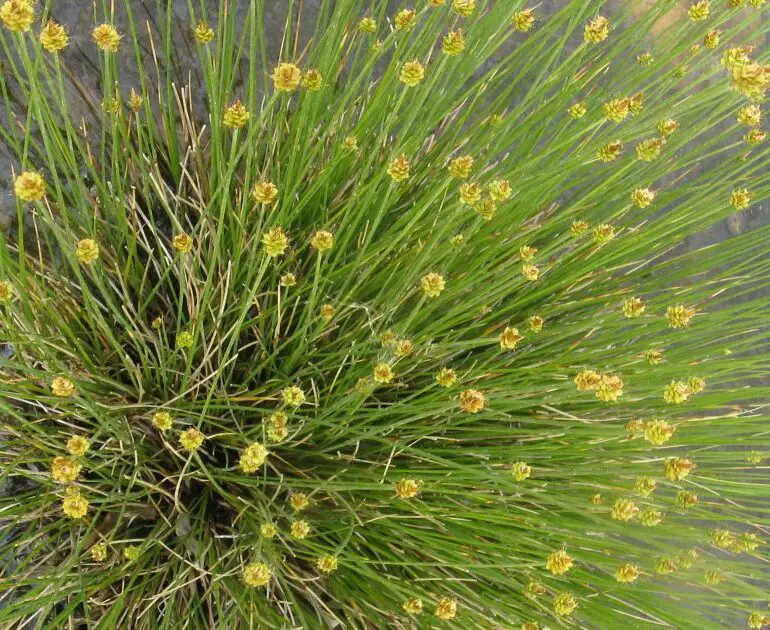Arctic sedges are one kind of evergreen perennial flowering plant that usually blooms in spring. The wet grounds are their favorite place to grow. Arctic sedges get their beauty after the blooming of brown flowers.
Arctic sedges are one of the most well-known plants in arctic regions. Today, I will discuss this plant’s importance, growth, and uses throughout this article. Besides, you will also know the production process and history of sedges if you stay with me till the end.
Arctic Sedges at A Glance
| Parameters | Details |
| Scientific name | Carex Capitata |
| Plant type | Perennial |
| Plant size | 6-12 inches |
| Leaves size | 3-15 cm long |
| Width | Null to 6 inches |
| Soil condition | Wetlands |
| Watering | Normal |
| Sun exposure | Shaded sun |
| Leaf color | Green, orange, reddish |
| Blooming color | Brown |
| Toxicity | No |
| Blooming season | Spring |
| Uses | Food, medicinal, and traditional items |
What is an Arctic Sedge?
In general, Arctic sedges are those flowering sedges plants that are found in arctic areas. Sedges are a family of grass-like flowering plants that usually have triangular stems and flowers.
They usually grow on wet ground. The scientific name of arctic sedge is Carex Capitata, and they belong to a large family Cyperaceae with 5500 known species.
The arctic sedges can grow in all environments. Most of them are found in wetlands. Arctic sedges are monocotyledonous plants with flowers. That means they have a single first leaf grown from germinating seed.
Arctic sedges are evergreen rhizomatous perennial flowering plants. Some of them are annual. They can grow up to 6 to 12 inches in height and 1 to 6 inches in width. These grasslike plants look like dazzling stars. Moreover, the bloom color of this plant is green and brown.
Why Is It Called Arctic Sedges?
To know the reason for calling it arctic sedges, first, you have to know the history of sedges. Egyptians first used sedges to make paper from papyrus sedges. Sedge means cutting edge, according to Watkins from proto germanic.
However, compared to old English, the meaning is likely identical: “Sword”. The name was spelled differently until 1900. After that, the sedge plant was named.
The Arctic is a region that refers to the north pole with the region around it. The sedges that grow in this region are called Arctic Sedges.
Where Do Arctic Sedges Grow?
The arctic sedges can grow under any conditions in any environment. But they usually like wet ground. Sedges can be found in all regions of the world without Antarctica.
In both terrestrial and aquatic habitats, sedges are present across the Arctic, where they are more significant ecologically than economically. Along arctic streams, ponds, and seashores, aquatic sedges are widespread. The aquatic species have both submerged and aerial leaves and are either free-floating or rooted.
How Do You Identify Arctic Sedges? [Appearance]
You can easily identify arctic sedges as they look similar to grasses but with different physical characteristics. Arctic sedge stems are triangular in cross-section, while stems in the grass are either flat or round.

The height of the sedges is small, as well as the width also. Generally, the height ranges from 6 to one foot.
However, the flower size of arctic sedges is also small. The color of the blooming flower is brown or green. The flower that the arctic sedges bloom is quite inconspicuous.
Arctic Sedges Adaptations
Arctic sedges can grow and survive in all environments. The adaptations of sedges in the arctic region and tundra biome are discussed below:
- Small root advantages: Usually, all types of sedges in the arctic region have small roots. For this reason, they are well-adopted there. Thus, they can absorb more nutrients than any other plants there.
- Low oxygen survival: Arctic sedges have a stunning ability to survive in a low-oxygen concentration environment. When soil is inundated, oxygen cannot spread as quickly as the soil’s organisms can use it. Wetlands are known for having low oxygen concentrations because of this.
How Much Sun Do Arctic Sedges Need?
Arctic sedges need moderate sunlight for proper growth. Sometimes they can grow without sunlight. But the plant may fade out if the sunlight doesn’t fall for a long time.
However, the best growth of arctic sedges is under the shaded sun. Although they can thrive in cool zones, warmer locations have better production of plants and flowers.
Some of the arctic sedges can tolerate too much sun. On the other hand, too much sun is risky for most sedges as the sun can burn them out.
How Do Arctic Sedges Reproduce?
Many of the arctic sedges are bisexual. That means they have both male and female parts in the flowering head. This indicates that they frequently reproduce in gardens without the aid of companion plants.

Regarding reproduction, the seed head is composed of achenes, which are fruits that contain a single seed. The perigynium, which resembles a bag, covers the achene.
Primarily they reproduce by rhizomes called runners rhizomes beneath the ground surface. The plant is removed from the ground and divided, and the resulting parts are immediately planted in the ground. Sedges do not reproduce by seeds usually.
Are Arctic Sedges Edible?
The answer is yes. Most of the arctic sedges are edible and nontoxic, and many people from different regions eat them as supplementary food.
Sedges have grass-like leaves that can be eaten raw. A portion of young plants’ stems is the pith that can also be eaten raw. Besides, you can eat it by cooking or by boiling it with normal water.
However, one thing should be kept in mind the roots cannot be eaten. It feels woody and tasteless. It has some nutritional value, but that does not mean that you have to eat much. Otherwise, it will cause stomach pain and other diseases. On the other hand, sedges are digestible for all types of domestic animals.
Arctic Sedges Taste
Most of the plants in the arctic have a bitter taste that keeps a negative effect while choosing to eat. But in the case of sedges, sweet and bitter sedges are available.
The seeds taste sweet all the time. You can eat it either raw or cooked. Although it has much nutritional value.
Sometimes the leaves taste sour. These can be used as a flavor in food. The root is a tasteless part with a woody flavor. Before eating leaves, make sure that the sharp edge doesn’t harm you.
Arctic Sedges Uses
Sedges are one of the most useful flowering plants that have a significant role in many aspects of our life. You can use it for food, fuel, or medical purposes.
- As food: Compared to grasses, some of the arctic sedges are used for food. The number of species is small. The most notable one is Eleocharis dulcis. Some species are important for animals’ food, mostly for domestic ones.
- As fuels: One of the most common sedges, name Papyrus sedge, was used for paper production since ancient Egypt time. This same plant is used as fuel in the tropics. A few other sedges are also used as fuels.
- Traditional uses: Arctic sedges are famous for their traditional uses. They have strong fibrous leaves and stems for weaving many household items. More specifically, baskets and mats are items that can be made with sedges. Besides, you can make a fence and rope also.
What Animals Eat Arctic Sedges?
Mainly, ducks, Grouse, Sparrows, and Turkeys eat arctic sedges. Also, mammals take them as a good food source. For birds and other animals, the foliage of sedges provides vital cover and places to nest.
On the other hand, some deer, sheep, and goat food depend on some sedges. The polar bear also takes it as food.
What Did Native Americans Use Arctic Sedges For?
Native Americans used Arctic sedges for making ropes. Apart from that, there is no noticeable usage has been seen of this plant. One reason behind that can be the fact that arctic sedges are rare to them.
Is Arctic Sedges a Medicinal Plant?
Although sand sedges are popular for treating dyspepsia, bronchitis, and catarrhs, there is not any solid evidence of using arctic sedges for medicinal purposes. Hence, my recommendation is to avoid this plant for treating any disease.
FAQs:
Are Arctic sedges native to North America?
Yes, a great number of species of arctic sedges are native to North America. Arctic sedges are most common in the tundra region. But several 500 species are native to North America.
Are arctic sedges good for wildlife?
Yes, they are tremendous for wildlife gardens since they serve as a host plant for several insects, provide food for birds in the form of seeds, and provide cover.
How do sedges adapt to the tundra?
In the tundra biome, the small and short roots help sedges to survive. They can absorb some nutrients where other plants fail. These sedges can survive up to 2 years in the tundra.
Conclusion
Arctic sedges are the most well-known and common sedges that are found in the world. Most people are wrong about its characteristics and determine this as grass, while there are some physical differences between them.
You can plant and grow it in your garden to increase the beauty of your garden. The color combination of leaves, flowers, and stems increases the beauty that can attract any person or animal.
Image source: gerhard.nitter.de


